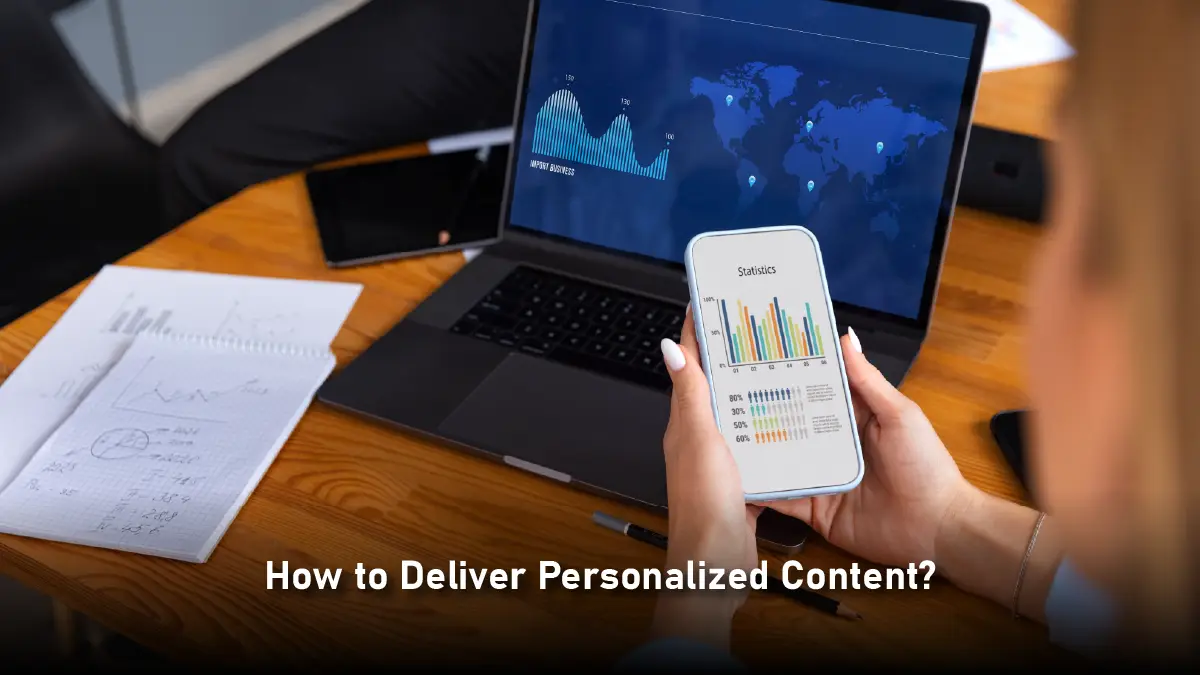Considering that 94% of marketers’ report that offering a personalized customer experience positively impacts their company’s sales, the importance of personalization is clearer than ever. Businesses looking to make an impression and connect effectively with their customers are quickly recognizing that personalized content is no longer optional, it’s essential.
Let’s start by setting the stage.
What is Personalized Content?
 Personalized content, often referred to as dynamic content, involves delivering tailored messages to visitors and customers based on their previous interactions with your site, as well as contextual, demographic, and behavioral data.
Personalized content, often referred to as dynamic content, involves delivering tailored messages to visitors and customers based on their previous interactions with your site, as well as contextual, demographic, and behavioral data.
To provide your potential customers with unique, relevant experiences, content personalization now increasingly leverages AI and predictive analytics. By analyzing browsing behavior, past purchases, and engagement patterns, businesses can deliver the right content at the right moment. In fact, 57% of consumers are now willing to share personal data in exchange for personalized offers or discounts, according to Salesforce, highlighting the growing potential of data-driven personalization while emphasizing the importance of ethical and transparent data practices.
There are various types of personalized content. It can be shown via emails, retargeting advertisements, and other media in addition to websites, where it can appear in headlines, CTAs, overlay messaging, and other touchpoints.
Types of Personalized Content
An effective content strategy employs a diverse range of content types, each of which can significantly benefit from personalization. Here are some of the key types in 2025:
Product Recommendations
Personalized product recommendations remain among the most effective types of content personalization. By tailoring suggestions based on a customer’s past search or purchase history, brands can create highly relevant shopping experiences. For example, Amazon Personalize uses AI-driven algorithms to recommend products, increasing engagement and conversions. Studies show that businesses leveraging AI for recommendations see significant gains in content relevance and customer satisfaction.
Email Personalization
Email personalization goes beyond addressing recipients by name; it incorporates dynamic content based on user behavior, preferences, or segmentation. For instance, a streaming service like Netflix can suggest content based on a user’s viewing history, enhancing engagement. According to HubSpot 2025, 86% of marketers believe their customers receive somewhat or very personalized experiences, emphasizing email’s continued relevance in personalization strategies.
Call-to-Action (CTA) Personalization
Customizing CTAs involves adjusting prompts or buttons based on user interaction patterns. By understanding what catches attention, businesses can fine-tune CTAs to boost conversions. Salesforce reports that high-performing marketers now fully personalize experiences across an average of six channels, showing that CTA personalization is increasingly part of a cross-channel strategy.
Landing Page Personalization Based on Ads
Aligning landing page content with user interactions from advertisements creates a seamless experience. AI tools can dynamically tailor landing pages to reinforce ad messaging, making campaigns more effective and improving conversion rates.
Personalized Web Pages
Website personalization delivers dynamic content tailored to each visitor. Instead of generic experiences, AI-driven platforms can adapt content based on visitor profiles, increasing interest and engagement. Brands are now using predictive personalization to anticipate user needs, making content more relevant than ever.
Social Media Ads
Social media personalization allows brands to target ads to specific audience segments based on demographics, interests, or browsing behavior. Retargeting strategies can re-engage users who previously interacted with the brand. Platforms like Etsy and eBay increasingly use AI-powered algorithms similar to social media feeds to provide hyper-personalized shopping experiences, boosting both engagement and sales.
Blog Posts
Behavioral data can recommend blog posts or resources based on users’ interests. For instance, if a visitor engaged with an introductory article, a personalized recommendation might suggest a detailed PDF or advanced guide. This approach encourages users to explore multiple pages, deepening engagement and creating a tailored content journey.
Also Read: From Content to Conversions: How Strategic Storytelling Drives Marketing ROI
How to Deliver Personalized Content?
 Personalizing content effectively can dramatically improve engagement and conversions. In 2025, marketers are increasingly leveraging AI-driven platforms, predictive analytics, and cross-channel strategies to deliver tailored experiences.
Personalizing content effectively can dramatically improve engagement and conversions. In 2025, marketers are increasingly leveraging AI-driven platforms, predictive analytics, and cross-channel strategies to deliver tailored experiences.
The process can be summarized into three key steps:
Step 1: Audience Discovery
The first step involves identifying the right audiences for your personalized content. Begin by analyzing all available data from website analytics to CRM insights in order to uncover patterns and obstacles in the customer journey. AI tools can help segment users more precisely, predicting which visitors are most likely to engage or convert. According to Salesforce 2025, high-performing marketers fully personalize experiences across an average of six channels, highlighting the importance of omni channel audience discovery.
Step 2: Message Creation
Once you’ve identified key segments, craft messages tailored to their needs and preferences. AI-powered tools can dynamically adjust content, emails, CTAs, or landing pages in real-time based on user behavior. Understanding your customers’ perspectives and streamlining their journey ensures that content feels relevant and timely, rather than generic.
Step 3: Evaluation
The final step is measuring results. Track conversions, engagement metrics, and content performance to ensure your personalization efforts are delivering ROI. AI platforms provide actionable insights, allowing marketers to iterate quickly. Continuous evaluation helps identify which campaigns resonate best and which segments can be further optimized, enabling marketers to allocate more budget to high-performing personalized campaigns that drive meaningful results and deeper customer relationships.
To Conclude
The integration of personalized content into dynamic marketing strategies represents a major leap in engaging and retaining audiences. By leveraging AI-driven behavioral targeting and predictive personalization, businesses can craft marketing experiences that resonate deeply with individual preferences and behaviors.
In 2025, personalization is not just a trend, it’s a strategic necessity. Companies that adopt AI-powered personalization across channels right from websites and emails to social media and apps can enhance user experience, increase engagement, and drive higher conversions. Platforms like Amazon, Netflix, Etsy, and eBay exemplify how advanced algorithms and data-driven insights create seamless, tailored journeys that delight customers.
At the same time, ethical data practices and transparency remain critical. Consumers are more willing than ever to share data for relevant experiences, but brands must prioritize consent and privacy to build trust and long-term loyalty.
Ultimately, businesses that embrace personalized content intelligently, responsibly, and across channels will not only capture attention but also foster stronger, more meaningful connections, positioning themselves for sustained success in an increasingly competitive digital landscape.


Comments are closed.